VIX Above 34
Chart in Focus from McClellan Financial Publications is a wonderful source of technical analysis ideas. The 23 July 2010 edition inspired me to work with the VIX and a long-term moving average to create something to anticipate tops. I settled on working with a 34-period simple moving average applied to the VIX after a small amount of experimentation. Within my Trade Navigator software, I created a custom function and use it to highlight price bars when the VIX is above 34.
The VIX Above 34 study does a pretty good job of “lighting up” the area near tops and highlighting areas of market weakness. It is late calling some tops, but always warns before falling prices do serious damage. The study is good at warning of danger to profitable long positions and to alerting traders to the potential of making productive use of short positions.
On the other hand, the study does NOT recover from calling attention to bearish market segments quickly. The delay is sometimes a simple matter of the VIX taking time to settle below its moving average after a spike upwards, but there are occasions where VIX maintains a high level for long periods even when the market is rising. Therefore, the study can be late sounding the all-clear signal.
As I have written this description, I have gotten a few ideas about how to improve the application of the VIX and a moving average to market signalling, but that must wait for another day.
March 21, 2014
Some daily signals are bearish, some bullish. The Smoothed Rate of Change study has held a bearish orientation since March 6th. The study would have turned bullish today except shares sold off. The study will stay bearish on Monday if shares are weak again. This study is pretty good about recognizing turns, so it is interesting that it has been bearish so many days in a row while price has marched in place.
March 20, 2014
Synthetic volatility turned bullish on 17 March. The actual volatility study turned bullish on 18 March and then shifted back to the bearish side on 19 March. The various signals I watch are currently almost evenly split between bullish and bearish, suggesting this is a good market in which to do nothing.
March 19, 2014
The Russell 2000 cumulative Advance/Decline study turned bullish on 17 March, but started looking toppy today.
March 18, 2014
A variety of daily signals turned bullish today and some yesterday. The volatility study was one that made its shift today.
March 17, 2014
Stocks gapped up on Monday, but the daily signal from volatility remained bearish. I closed speculative bearish positions at a loss in the morning.
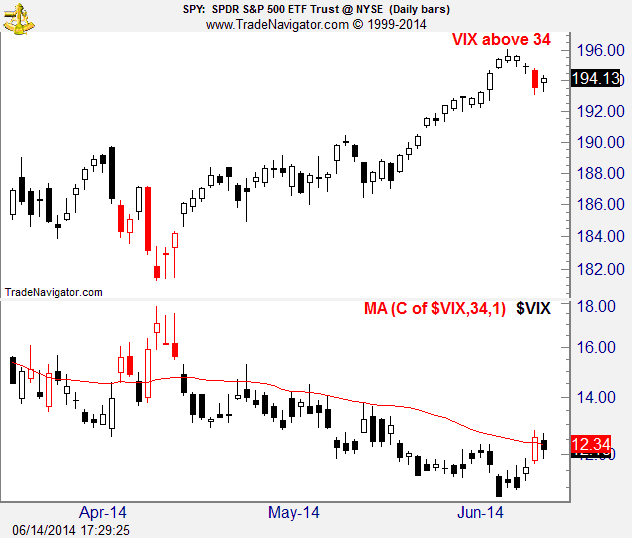
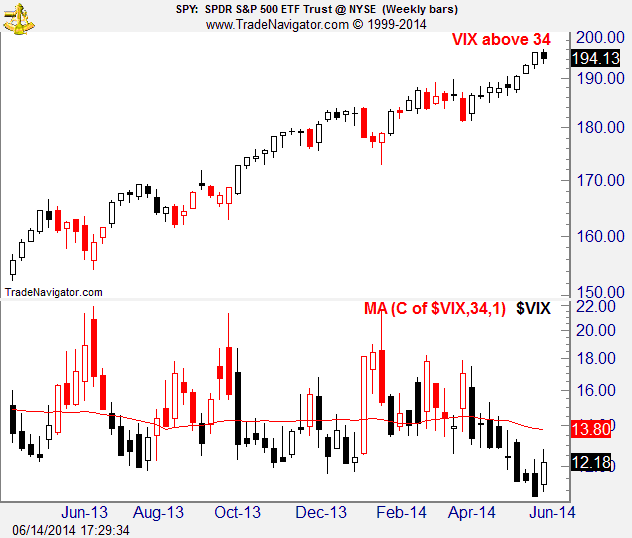
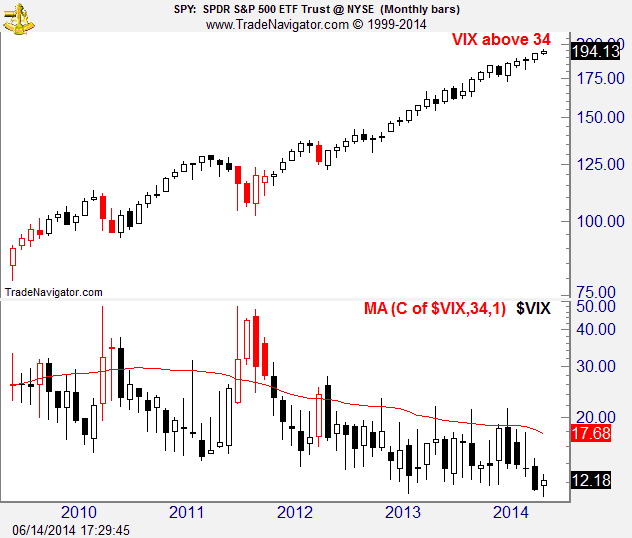
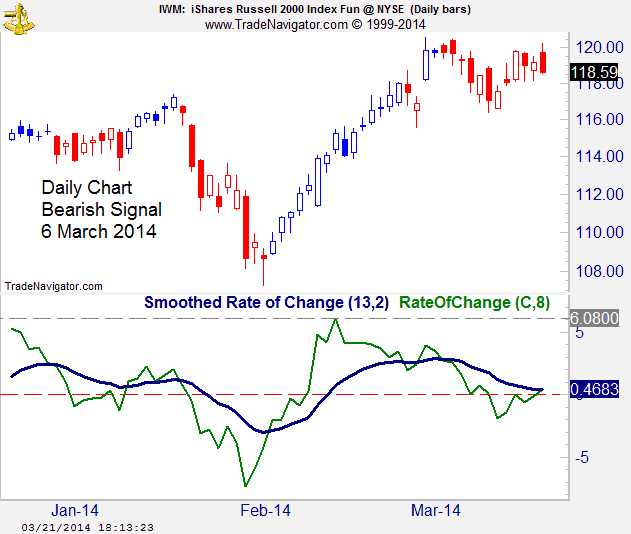
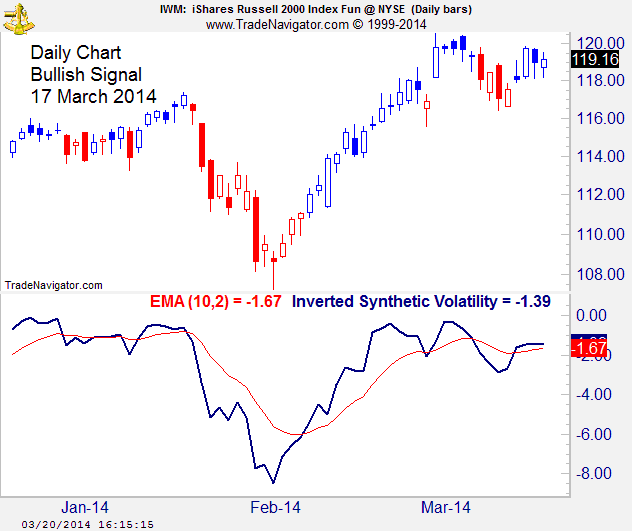
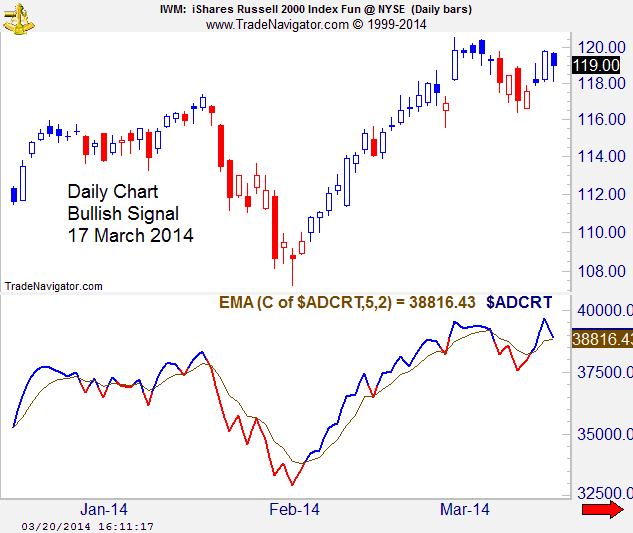
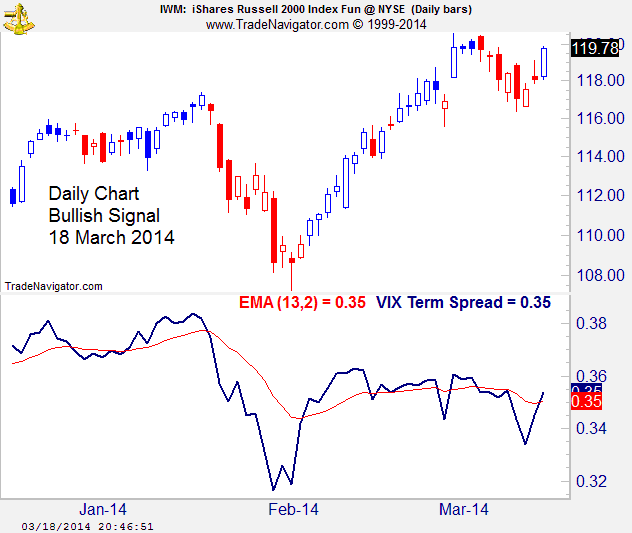
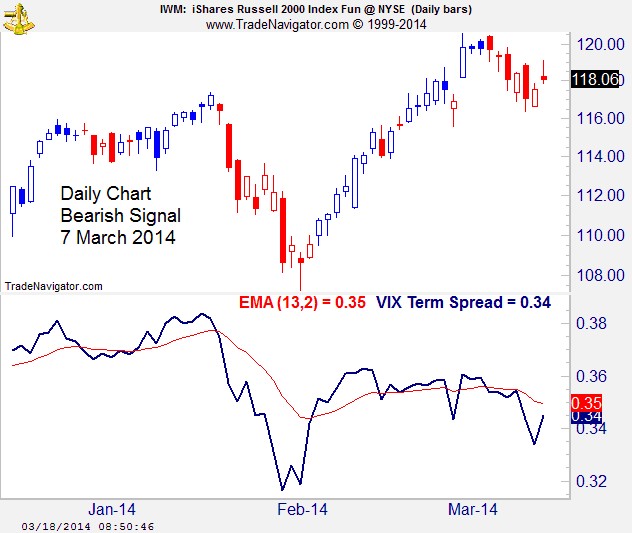
 Financial markets are predictable because segments of price action fit together in a limited number of patterns that are not random. Markets are unpredictable too because there is enough variability in the patterns to hide the trend at some stages of development. I am fascinated by the market and spend a lot of time working to identify price trends so I can exploit them for profit.
Financial markets are predictable because segments of price action fit together in a limited number of patterns that are not random. Markets are unpredictable too because there is enough variability in the patterns to hide the trend at some stages of development. I am fascinated by the market and spend a lot of time working to identify price trends so I can exploit them for profit.